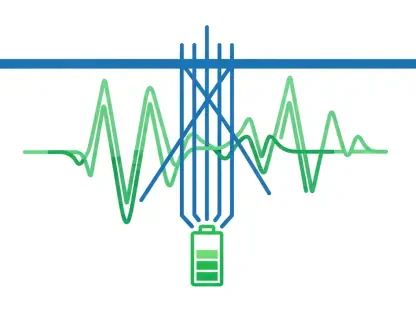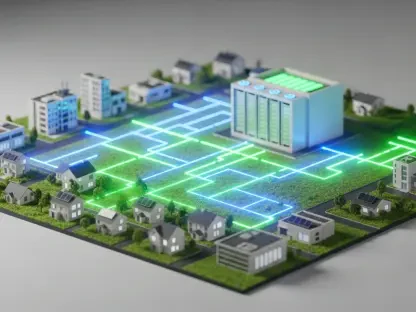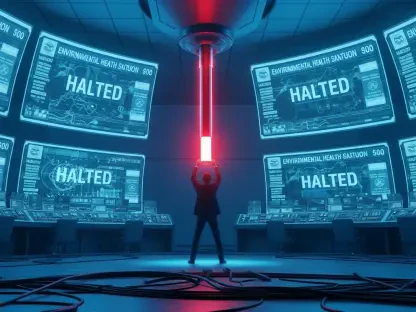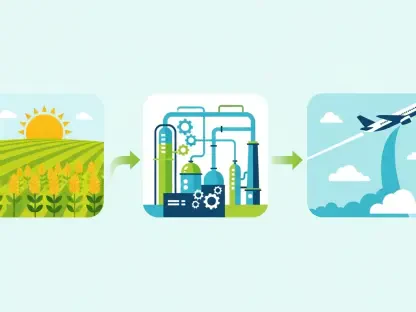Imagine a world where renewable energy powers entire cities, yet the sun doesn’t always shine, and the wind doesn’t always blow, posing a significant challenge to modern energy grids where the intermittency of sustainable sources threatens reliability. Battery Energy Storage Systems (BESS) have emerged as a pivotal solution, storing excess energy during surplus periods and releasing it during demand spikes. This technology stands at the forefront of the clean energy revolution, promising to bridge the gap between production and consumption. This review delves into the intricacies of BESS, exploring its core technologies, real-world impact, and the hurdles it must overcome to shape a sustainable future.
Core Technologies and Components of BESS
Lithium-Ion Batteries: Market Leadership and Key Traits
Lithium-ion batteries dominate the BESS landscape due to their exceptional energy density, allowing significant power storage in compact spaces. Their efficiency in charging and discharging cycles ensures minimal energy loss, making them a preferred choice for grid-scale applications. Additionally, their durability over numerous cycles translates to long-term cost savings, despite higher upfront costs.
However, this technology is not without flaws. Safety risks, such as thermal runaway leading to fires or explosions, remain a concern, especially in large installations. Advances in battery management systems aim to mitigate these dangers, but the inherent chemical volatility continues to demand rigorous oversight and innovation in design.
Alternative Battery Options: Flow and Sodium-Ion Technologies
Flow batteries present a compelling alternative, storing energy in liquid electrolytes kept separate from the battery cells, which significantly reduces fire risks compared to lithium-ion systems. This design offers a safer profile for certain applications, particularly where safety outweighs performance needs. Yet, their slower response times and bulkier setups limit their suitability for dynamic grid demands.
Sodium-ion batteries, another emerging contender, are gaining attention for their sustainability, relying on abundant and less toxic materials. Their safety advantages make them a promising option for future development, though current limitations in energy density and cycle life hinder widespread adoption. These alternatives highlight a growing interest in diversifying BESS technologies to address specific challenges.
Recent Innovations and Emerging Trends
The BESS sector is witnessing rapid advancements, particularly in enhancing lithium-ion battery safety. Improved containerization techniques now limit potential fire spread, with designs ensuring that incidents remain confined to small sections of a facility. Fire prevention systems, including advanced alarms and suppression mechanisms, are becoming standard in new installations.
Beyond safety, there is a noticeable shift toward exploring alternative chemistries that could reduce reliance on lithium-ion dominance. Research into scalable solutions with lower environmental impact is accelerating, driven by both industry and regulatory pressures. Stricter safety standards are also reshaping project designs, reflecting a broader commitment to public welfare.
A notable trend is the industry’s response to community concerns, with companies adopting more transparent communication strategies. This shift aims to balance the urgent need for energy storage with public apprehensions about health and environmental risks. Such efforts are critical to maintaining momentum in deployment while fostering trust.
Real-World Applications and Impact
BESS plays an indispensable role in bolstering grid reliability, particularly in regions with ambitious renewable energy targets. In California, for instance, large-scale facilities support the state’s goals by storing solar and wind energy for use during peak demand or low production periods. These systems ensure a steady power supply, mitigating the risk of blackouts.
Beyond grid support, BESS is vital in remote areas where traditional infrastructure is impractical. By stabilizing power in isolated communities, these systems enable access to consistent electricity, often paired with small-scale renewable setups. This application underscores the technology’s versatility in addressing diverse energy needs.
Unique use cases also include emergency backup systems for critical infrastructure like hospitals and data centers. During natural disasters or grid failures, BESS provides a lifeline, ensuring uninterrupted operations. Such deployments highlight the broader societal benefits of integrating storage solutions into modern energy frameworks.
Challenges and Barriers to Adoption
Despite its promise, BESS faces significant obstacles, with safety concerns topping the list. High-profile incidents involving fires and toxic emissions have heightened public scrutiny, casting doubt on the technology’s reliability. These events underscore the need for robust risk management and fail-safe mechanisms in every installation.
Environmental and health risks further complicate the landscape, as potential emissions from damaged batteries pose threats to nearby communities. Regulatory hurdles also slow progress, with varying standards across regions creating uncertainty for developers. Harmonizing these frameworks remains a pressing issue for scaling up deployment.
Community opposition adds another layer of complexity, often driven by fears of declining property values and unresolved safety questions. Addressing these concerns requires not only technical solutions but also improved dialogue between stakeholders. Efforts to enhance transparency and provide thorough training for local responders are steps in the right direction, though much work remains.
Future Outlook and Potential Developments
Looking ahead, the trajectory of BESS appears poised for transformation through breakthroughs in safer battery chemistries. Research into scalable alternatives with reduced toxicity and flammability could redefine the industry, offering solutions that align with both performance and safety demands. Such innovations are critical to overcoming current limitations.
The long-term impact on energy grids could be profound, with BESS enabling a near-complete transition to renewable sources. As storage capacity expands over the coming years, from current levels to ambitious targets by the end of this decade, grids will gain resilience against fluctuations. Policy support and accelerated funding for research will play a decisive role in this evolution.
Moreover, societal benefits extend beyond technical metrics, potentially democratizing access to clean energy in underserved regions. The challenge lies in navigating regulatory and public acceptance barriers to ensure equitable deployment. A collaborative approach involving industry, governments, and communities will be essential to realizing this vision.
Closing Thoughts and Next Steps
Reflecting on the journey of Battery Energy Storage Systems, it becomes evident that this technology has carved a crucial niche in the renewable energy sector, despite early setbacks. Its ability to stabilize grids and support sustainable power sources marks a significant achievement in addressing modern energy challenges. The evolution of safety protocols and performance metrics stands as a testament to the industry’s adaptability.
Moving forward, actionable steps include prioritizing investment in alternative chemistries that promise safer and more sustainable options. Governments and private sectors need to collaborate on streamlined regulations that encourage innovation without compromising public well-being. Engaging communities through education and transparent project planning emerges as a vital strategy to rebuild trust and ensure broader acceptance of this transformative technology.









